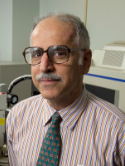| Abstract: |
Nucleotide excision repair (NER) is the major repair pathway in eukaryotes that removes bulky DNA adducts (1-4). A complex set of factors sequentially assemble on the damaged DNA region (5,6) and cause the incision of the DNA on both sides of the lesion, and the excision of oligonucleotides 24-32 nucleotides in length that contain the lesion. The mechanisms of this complex process have been extensively studied (7-13), and it is now accepted that the first and rate-determining step in NER (reviewed in Ref. 14) is the recognition of helix-distorting lesions by the XPC/HR23B protein complex. As described recently (5), once the XPC/HR23B complex has been recruited to the damaged site, the multiprotein transcription factor TFIIH binds in turn to this complex. The helicases XPB and XPD within TFIIH cause the unwinding of a 20-25 nucleotide patch around the site of the lesion in an ATP-dependent manner. The arrival of RPA, a single-strand binding protein, further stabilizes this bubble-like structure. Also, XPA then binds to this nucleoprotein complex, presumably to promote the correct positioning of the subsequently acting endonucleases, and XPC/HR23B is released. The structure-specific endonuclease XPG, followed by the endonuclease XPF-ERCC1 bind to the bubble-like intermediate and incise the damaged strand on the 30-and 50-sides of the lesion, respectively, thus releasing a 24-32 nucleotide long fragment containing the damage (5). © 2005 by Taylor and Francis Group, LLC. |



